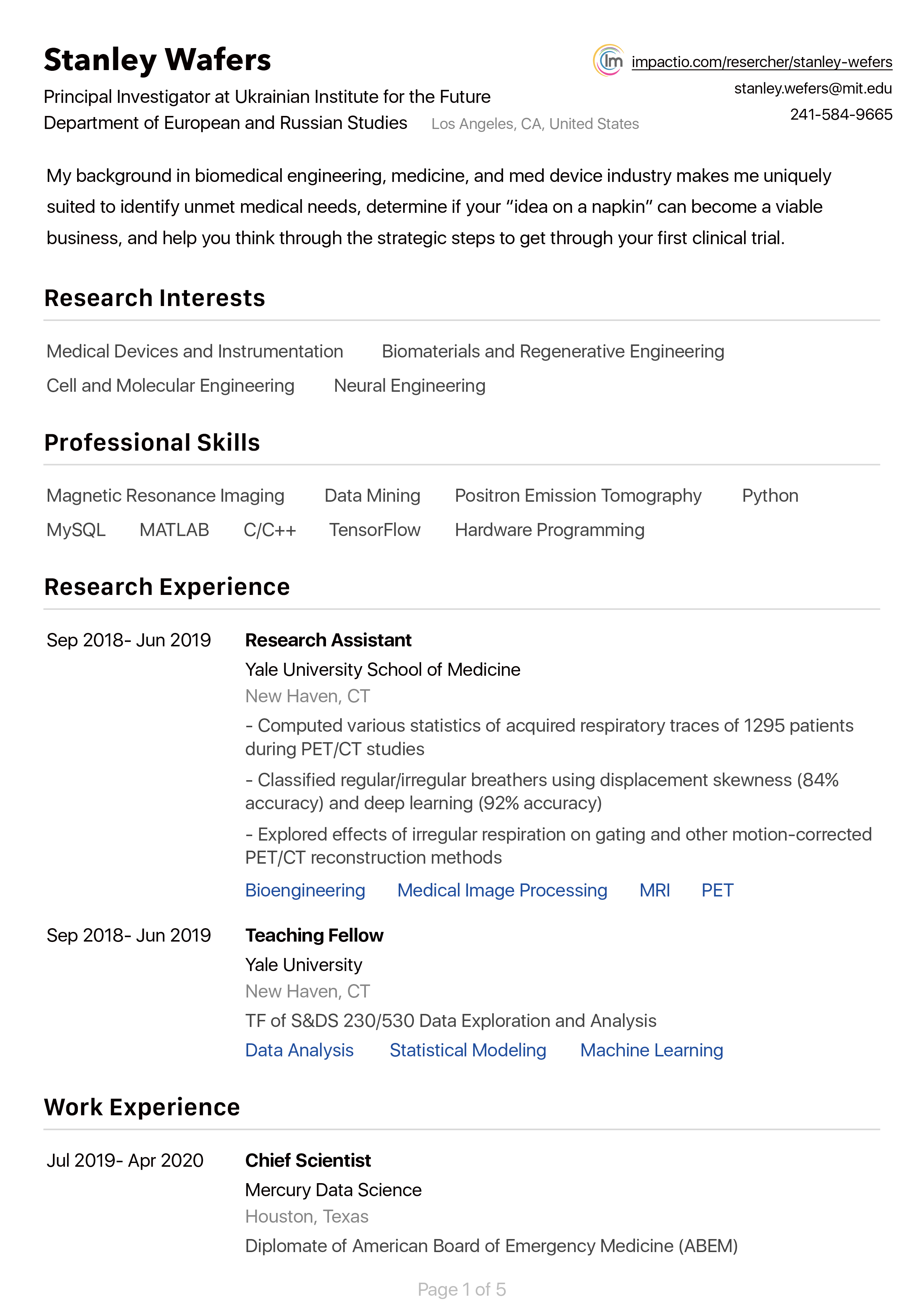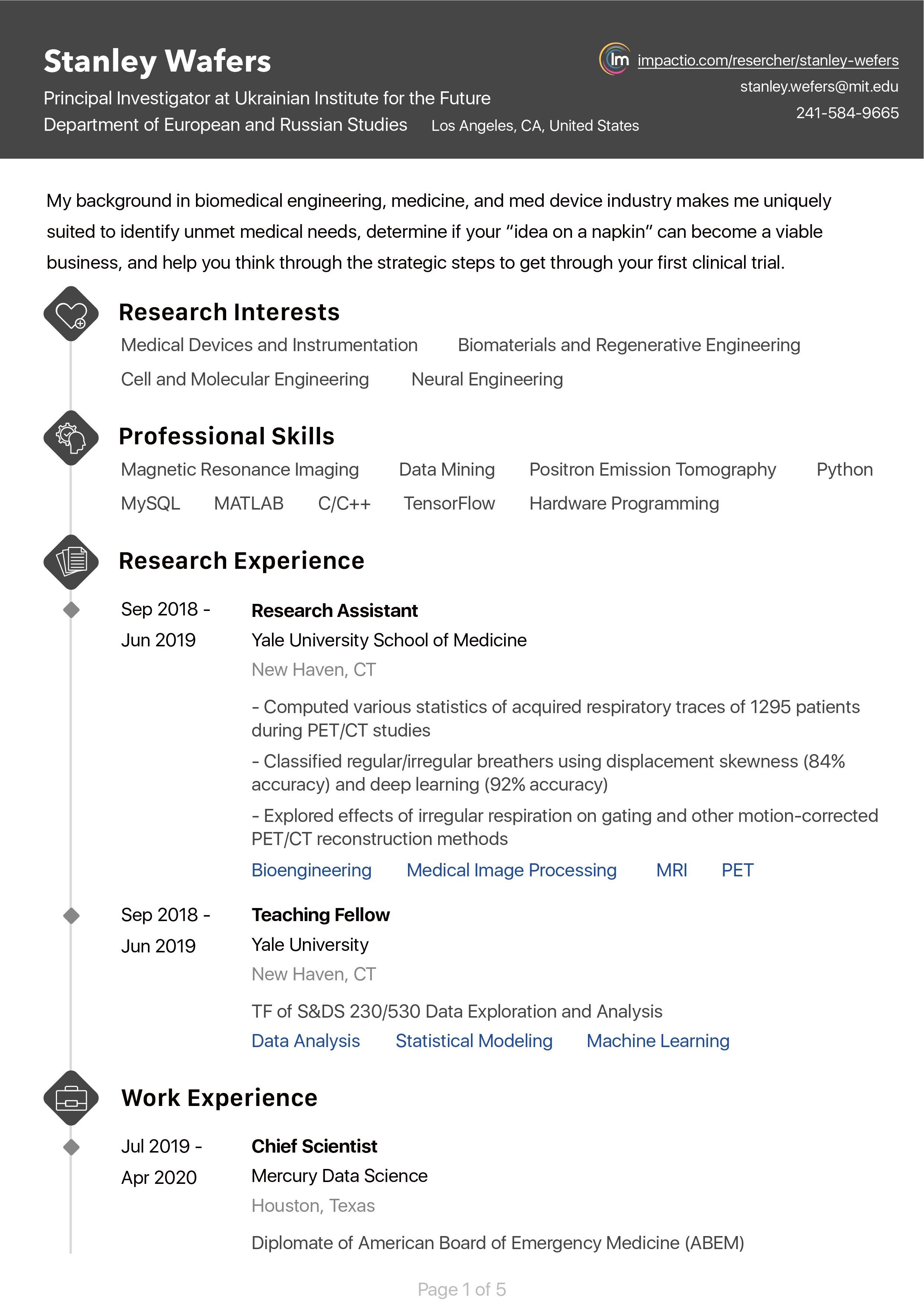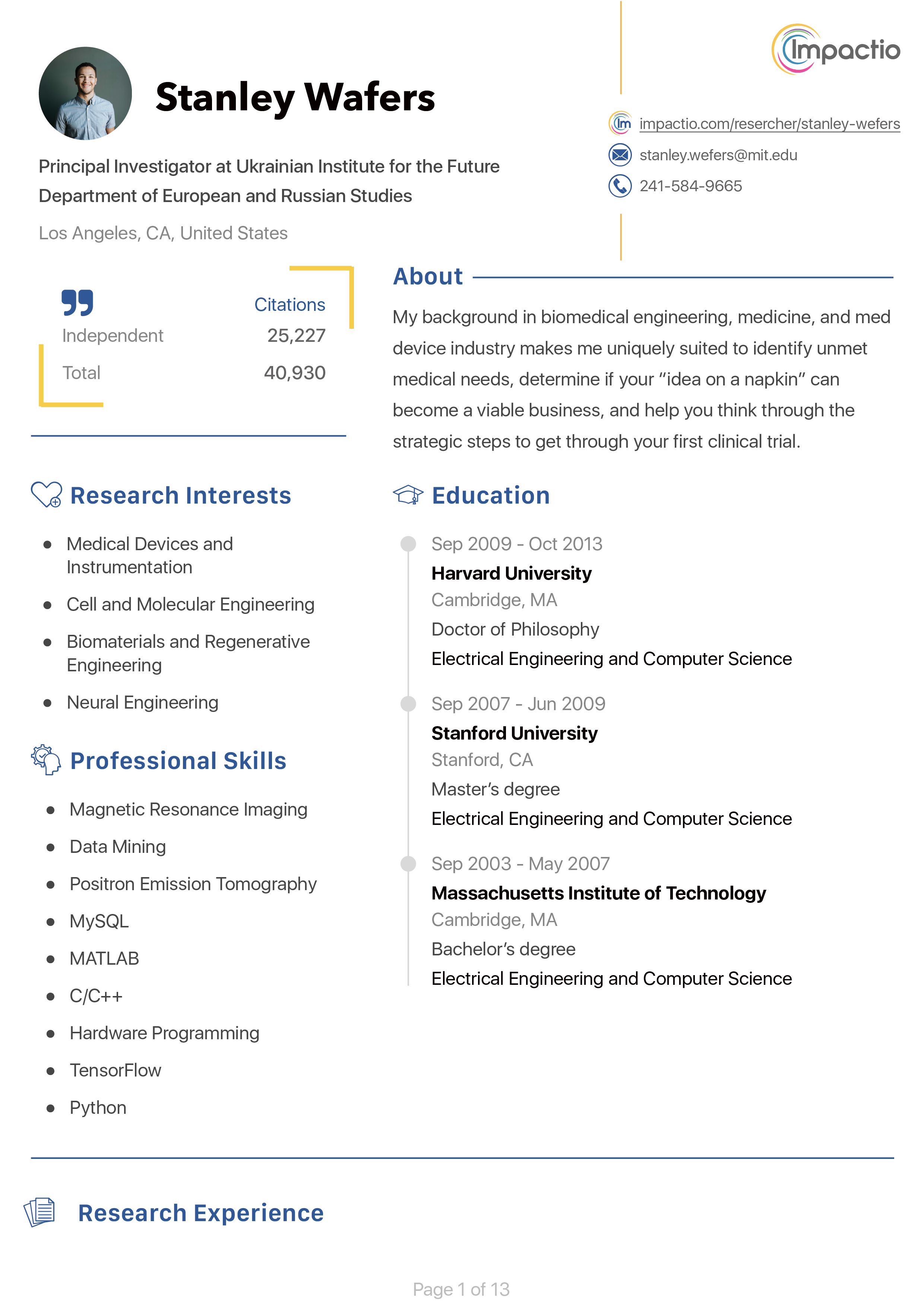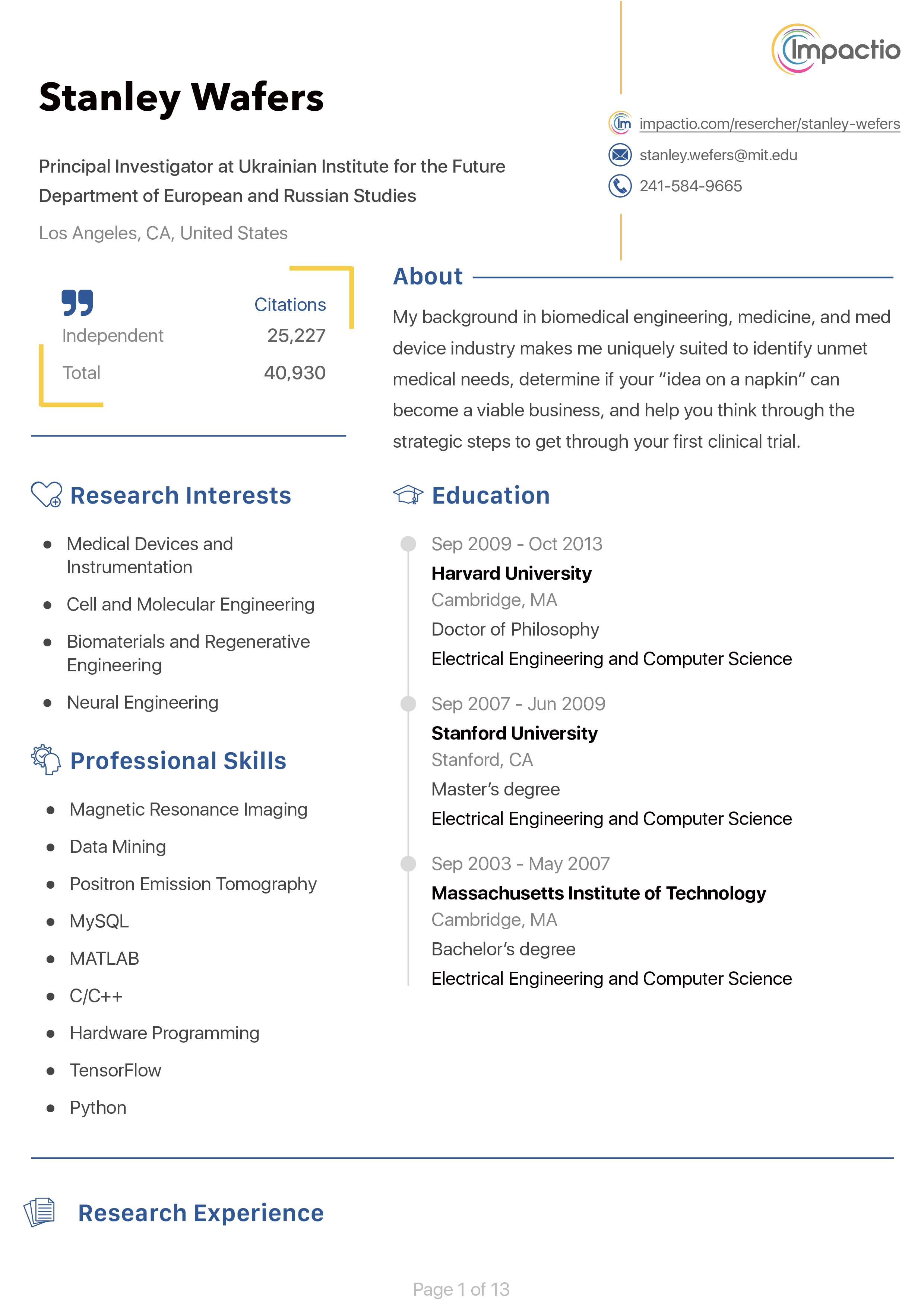Education:
PhD of Applied Linguistics from the Higher Institute of Languages at Tunis.
MA of Applied Linguistics from the Higher Institute of Languages at Tunis.
BA in Translation from the Bourguiba Institute for Modern Languages.
Professional career:
Teaching Assistant and Head of the English Department at ISEAH Kef, University of Jendouba.
Former Teacher at the Military Academy, University of Tunis, University of Carthage.
Former researcher and Project manager at the Regional Institute for Informatics and Telecommunications
Research areas:
motivation, WTC, group dynamics, emotional intelligence, and anxiety.
Miscellaneous:
TAYR Quarterly editorial board member.
Founding member - TAYR.
Founding member- association Investment Development-Jendouba 2050
Doctoral Thesis
My initial teaching experience and my discussions with colleagues inspired me my PhD topic. The title of my PhD project is “The Willingness to Communicate among University Students of English in Tunisia”. The chief endeavor of my research is to diagnose, portray and model the construct of WTC in the Tunisian EFL context. The variables fundamental to WTC are Trait-like WTC, Perceived Communication Competence (PCC), Foreign Language Class Anxiety (FLCA), Motivational Orientations (MO), Group Cohesion (GC), and Classroom Physical Environment (CPE). To scrutinize the interrelations among the variables, a mixed method was adopted through the use of questionnaires and interviews with 2nd and 3rd year students of English at the ISLT. The study was carried out with 172 respondents and 11 interviewees. The proposed model hypothesizes that Classroom WTC is directly influenced by Trait-like WTC, PCC, MO, GC, and CPE and indirectly influenced by FLCA via PCC.
The main findings of the study are summarized as follows:
- The reliability of the questionnaire was statistically measured by means of the alpha coefficient with (α= .875) for the 99 items of the questionnaire.
- The descriptive statistics shows that students had a rather significant but moderate WTC index with 3.34.
- The proposed model was partially confirmed with trait-like WTC, self-perceived communication competence and group cohesion as the direct antecedents of Classroom WTC and FLCA as an indirect antecedent of Classroom WTC through SPCC.
The modified model transpired in the following causal relationships: (a) L2 WTC is directly influenced by Trait-WTC, PCC, and GC, (b) L2 WTC is indirectly linked to FLCA through PCC, to CPE and MO through GC, and (c) Speaking Proficiency is directly influenced by L2 WTC. The goodness of fit indices indicated a good model fit.
I started teaching at the Military Academy in the year 2008-2009 as a part time teacher then I was hired as a contractual teaching assistant stating from 2009-2010 to date. Teaching English in the military academy is basically focused on technical and thematic English depending on students’ speciality. Apart from military teaching and activities, the Military Academy has two teaching branches, an engineering school and a legal and management school. The teaching at the Military Academy lasts three years; five semesters of teaching and a final semester dedicated to an end-of-study project. The engineering school has six majors, i.e. computer engineering, telecommunications, civil engineering, electro-mechanics, applied sciences to armament, and armament techniques. The last two branches are specific to the military academy. The legal school is composed of a hybrid speciality mixing law and management (Sciences Juridiques et Gestion: SJG). After the LMD reform, the SJG speciality has become an MA in public law with only two years of study.
At the academy English is used to be taught for five semesters for the majority of specialities. The armament techniques and the electro-mechanics students have only four semesters of English. After the 2013 reform, all engineering branches study English for 172 hours during the five semesters organized as follows: 36 hours for Semester 1, 36 hours for Semester 2, 36 hours for Semester 3, 28 hours for Semester 4, and 36 hours for Semester 5. The MA students study English for only 60 hours, i.e. 20 hours per semester.
During my eight years of experience at the academy, I taught almost all branches and levels. To teach and assess my students, I used several manuals, for general English and ESP, and books including grammar and reading books (see annexed reference list).
Teaching Method
At the academy we generally teach for a four-hour chunk with a twenty minute break. The teaching method is rather eclectic ranging from communicative, to audio-lingual, alternative teaching. Along with manuals and books, we are encouraged to use audio visual aids (in the academy we have three language laboratories). The audio visual aids are mainly documentaries, short movies, news chunks, and video listening lessons taken from the Headway Video series.
With the language department, we teachers of English agreed on a general program for the five semesters with general objectives and specific ones. The general objective is to help future engineers and officers communicate fluently with a basic knowledge of specialized English along with military English.
Specific Objectives
As far as engineering students are concerned, the first and second semester are meant to consolidate students’ previous knowledge of the language and improve their level. To do so, I mainly used the Headway and the Face2Face manuals intermediate levels. The manual is organized in topic with reading, listening, speaking and writing activities as well as a large focus on grammar. The use of the manual is accompanied with some other activities such as guessing riddles, watching documentaries with summary and discussion, listening to news chunks, etc.
The third semester is dedicated to English for engineering in general as the students are supposed to acquire a minimum knowledge of technical English as well as military English, especially in the engineering field. For this purpose I use the Cambridge English for Engineering with audio CDs and Command English. The Cambridge English for Engineering is organized around topics and thematic and focuses on skills development, language work with a focus on grammar through reading and listening. The main focus in Command English is military situations, vocabulary, abbreviations and acronyms.
The fourth semester aims to introduce students to the jargon of their engineering speciality and raise their awareness to the importance of learning the language as most references are published in English. Also, during this semester military English is consolidated using the manual stated in the previous paragraph. In order to meet these objectives different manuals are used according to students’ specialities. The manuals used are organized around topics and thematic related to the speciality at hand, and focus on skills development, language work with a focus on grammar through reading and listening.
By the end of the fifth semester the students will be able to communicate fluently, write in their speciality and may prepare their end-of-study report in English. To achieve these goals the manual used during the fourth semester is continued.
I taught 1st year grammar at the Higher Institute of Applied Studies in Humanities in Zaghouan (ISEAHZ). I taught 1st year grammar at ISEAHZ for three years.
Course description
The present course is a yearly course extending over an average of 28 weeks (two hours per week). The academic year is divided up into two semesters, each extending over a period of approximately 14 weeks. Each session is supposed to consist of two main parts: a “lesson part” and an “exercises part”. On the one hand, the course is intended to introduce first year students to some basic notions of English grammar, such as part of speech, phrases, sentences, etc. On the other hand, the course is above all intended to consolidate the students’ knowledge of the basic grammatical rules and their appropriate uses.
General Objectives
The ultimate goal of the grammar course is to make students able to make use of and implement the grammatical rules properly in their written and spoken English.
Specific Objectives
By the end of first semester, students should be able to recognize the different parts of speech (Verbs, Nouns, Pronouns, Adjectives, Adverbs, Prepositions, Conjunctions and interjections), the different parts of the sentence (Subject/Verb, Predicate Nominative, and Direct Object, Transitive/Intransitive verbs, Appositives, Nouns of Address, Prepositional Phrases, Indirect Objects, Verbals (Gerunds, Noun Infinitives, Participles, Adjective Infinitives, and Adverb Infinitives), and the different tenses (the present tense, the past tense, and the future).
As for the second semester students are suppose to acquire sufficient theory and practice about conditional sentences (real and unreal conditionals), the different usages of modals (possibility, permission, ability, recommendation, advice, duty, responsibility, and obligation), and the passive.
Methodology
Practice represents the cornerstone of the course. The students are invited to work on a wide range of exercises, varying from identifying items, combining pairs, providing the right form and tense, constructing and deconstructing sentences, among others.
FIRST YEAR LISTENING AND SPEAKING COURSE
General objectives
The present course is a yearly course extending over an average of 28 weeks (two hours a week). The course is meant to help students through a process of skill development in listening and speaking. Students are encouraged to take part in the different in class activities. The ultimate goal of the speaking class is the help future teachers and practitioners use the language easily and fluently and get involved in discussions and conversations.
Listening
The listening component of the course includes authentic listening materials which are taken from both British and American English in order to expose students to different varieties of English. These materials are also intended to improve students listening for general understanding as well as for specific information look-up. The different listening activities tackle stimulating and controversial issues that are intended to promote follow-up discussions.
Speaking
In order to set up contexts for encouraging genuine purposeful communication and developing power of self-expression, the speaking element of the course uses a variety of techniques (e.g. discussions, role play, and problem solving activities) that promote interaction in the classroom. Since the goal is communicative and the emphasis is on developing fluency as well as accuracy, you are encouraged to interact actively in debates and express your own views and attitudes openly.
Assessment
For both speaking and listening, students are assessed on a continuous basis. Students will be sitting for continuous assessment tests and an end-of-term examination (at the end of each semester). Students are also assessed according to attendance and participation during classroom activities.
Problems
The problems I faced when teaching first-year oral skills were caused by the lack or the absence of appropriate teaching materials such as CDs, DVDs, Headphones, Video projectors, loud speakers (the problem is partially solved with an abundance of electronic material and online courses) and the absence of dedicated spaces added to that the problem of attendance with Maîtrise students. Developing listening and speaking skills requires alert teachers, practice, adequate material, and involved students.
Recommendations
Involve students in the task by bringing their own lap tops if possible or smart phones as a temporary solution to the lack of teaching equipment. These equipments could be used during the listening and the speaking lessons. During the listening or the video listening lesson they are used to listen to audio tracks or watch video tracks. During the speaking lesson, they could serve to record students’ discussions so as to point out the mistakes made and help overcome such mistakes. Also, we could use Wi-Fi connections to access material. In the absence of a Wi-Fi connection, a tethering and portable hotspot connection could be of use.
SECOND YEAR GRAMMAR COURSE
Course description
The present course is a yearly course extending over an average of 28 weeks (two hours per week). The present course is indeed a continuation of first year grammar course. The difference resides in the degree of complexity. The focus is shifted from the simple sentence with its basic components (the noun phrase, the phrase) and sub-components to the complex sentence and the different types of clauses as well as the complex noun phrase. The students are also introduced to some stylistic variations including ‘information processing’, in particular. Modality and tenses are also revisited, putting more emphasis on the ‘meaning’ which the different tenses and modals express.
It is worth mentioning that the course is basically meant to raise the students’ awareness of the relationship between form, function, and meaning (i.e. a communicative approach to grammar).
Objectives
The basic objective of the course is to make the students able to assimilate the relationship between grammar and meaning, and above all make them able to use grammar properly in their written language, whatever the subject they are dealing with is.
Specific Objectives
Students at the end of the first semester are supposed to master the complex sentence structure and different components including nominal clauses (finite and non finite nominal clause) and adverbial clauses (time, reason, purpose and result, contrast and concession, manner / comparison, condition (if …, If…not /unless, but for ….), comment and view point).
During the second semester, students will be exposed to and should be able to master the aspects of information organization, reporting, and tense, time and aspect. Organizing information mainly tackles extra-position and inversion. Reporting peoples’ ideas and words using reporting verbs, questions, statements, as well as the use of modal verbs in reporting, and speech acts reporting. Also, students would be capable of knowing the different uses and meanings of tenses and aspects.
Methodology
Practice represents the cornerstone of the course. The students are invited to work on a wide range of exercises, including the identification of forms, functions and/or meanings of sentence elements in texts, the explanation of relevant differences between pairs, the construction of sentences using particular functions or meanings, among others.
My teaching experience is three-fold; teaching English majors at different Tunisian institutions then teaching English for non-specialists mainly at the Military Academy, and back to teaching English majors.
The first part of my teaching career was at various higher education institutions. For first year Maîtrise and LMD regimes I taught grammar, oral skills, and ESP. For second year Maîtrise and LMD regimes I taught grammar, oral skills, and translation.
In fact, starting a teaching career after 12 years of office-like work was a real challenge for me. I had to relearn in order to teach. The beginning was truly hard, especially in ISSH Jendouba where I was appointed to teach 1st and 2nd year grammar. I restarted learning grammar almost from scratch. At the pedagogical level I was lucky to receive one-month training after M1 graduation but tried also to imitate the teachers who inspired me, those who left a mark in me. The experience was very exciting and delicate at the same time. I was always asking myself, what if I was teaching the wrong way. This question haunts me still.
The second part of my teaching career was at the Military Academy where I am currently teaching ESP to military students (2009 – 2016). The students are future officers of the ministries of National Defense, Interior Affairs, and Justice. At the academy the subject coordinator and the head of the department of humanities recommend using ready-made textbooks available at the library of the institution or provided by the senior teachers. Despite the recommendations of the administration, I have always tried to adapt the teaching manual and material to the level of the class, especially first year students. A placement test is used to evaluate the overall level of the class and is also used as review basis for freshmen students.
At the military academy learners study English for five semesters (172 hours). Each group studies English 4 hours a week but in the morning or afternoon of a single day. Of course this is neither methodological nor pedagogical but when teachers complain they are faced with administrative and time constraints. At the end of their training they are supposed to have acquired intermediate to upper intermediate mastery of the language with the ability to write reports in English. As I deem it necessary to consolidate learners’ general English, 1st year students are taught general English during the first two semesters. General English is instructed using either Headway or FacetoFace textbooks. The Headway video listening is also used to expose students to authentic language with the different situations the manual presents.
During the third semester engineering students are given an introduction to English for engineering. For semester four and five students are taught ESP using textbooks according to their specialty. In addition to technical English students are given tools and aids for efficient communication; they are initiated to presentation organization and delivery. Along with general English and speciality English, students are also taught military English at all levels. Depending on the size of the class (20 max), the language lab is used for listening, video listening, and viewing activities.
Other than textbooks, I had the chance to use other materials. Documentaries for instance represent a very efficient resort to refresh students’ interest in the course. A documentary with a specific topic, i.e. military warfare, sniping, war in Iraq, environmental issues, mass media, etc. is projected with students taking notes and the documentary paused for discussion or explanation. Most of the time, the topic of the exam essay is related to one of the documentaries we’ve seen during the semester; a way to keep students alert and interested. Sometimes, after a long day, to boost students’ attention we play with language. I give them crosswords, riddles and discrete points to solve; to some extent this method worked.
The third part of my teaching career started as of my recruitment by the ministry of higher education as teaching assistant at the Higher Institute of Applied Studies in Humanities in Kef in January 2017. During the second semester of the academic year 2016-2017 I was in charge of preparing and teaching oral skills, general purpose translation, and introduction to linguistics key concepts. In addition, I started teaching Lexical semantics for 3rd year ECD students at the Higher Institute of Human Sciences in Jendouba. During the last two academic years I was in charge of preparing and teaching first and second semester linguistics (Phonology, morphology, semantics, discourse analysis, sociolinguistics and psycho-linguistics), syntax, commercial translation, methodology, and legal English.
In order to teach all these subjects I used numerous resources and asked more experienced colleagues for help, if need be. In the teaching process I resort to book chapters and articles which students summarize and present in class, especially for the linguistics courses. Presenting in class gives students the opportunity to exercise research and improve oral skills at the same time. These mini-projects allow students to be more autonomous, motivated and creative. Creativity and motivation are aroused by competition atmosphere that the teacher creates in the classroom.
I had also the opportunity to supervise ten 3rd year Business English students so far, as well as four professional MA projects (ongoing). As the end of studies memoir is the coronation of a one-month internship, I tried to orient my supervisees to choose specific places for the internship (Business Center, Tunisian Confederation of Industry, Trade and Handicrafts-UTICA, Private companies, Banks, the Tunisian Post Office) but more important the topic they have to work on. As I have teaching methodology for the last two years, I tried to adapt the subject with the specificities of the internship and the requirements of the report. The ongoing professional MA projects concern students majoring in Business English and Communication at the Higher Institute of Human Sciences in Jendouba. Students have proposed interesting and up-to-date topics such as: « The Impact of Terrorism and Instability on Tunisian Tourism Sector from 2015 to 2018 », « The Manipulation of English Borrowings and Tunisian Dialect in Marketing Discourse: H.A. as a case Study », « Internal Communication and Employees Perception of the Banking Sector in Jendouba/ Private Sector Versus Public Sector ».
In teaching, I believe in eclecticism, CPD, self-awareness, self-management, and action research. Being a conceptual approach, eclecticism does not hold firmly to a single paradigm or set of assumptions, but instead draws upon various theories, styles, or ideas to gain complementary insights into a subject, or applies different theories in particular cases. Through my humble experience teaching general English and ESP I became convinced that the best way to teach different students’ profiles with different cultural backgrounds is to diversify approaches, methods, activities, and tasks. CPD is an integral part of the dynamic teacher’s career. Teachers should be up-to-date with the new approaches to teaching/learning methods and strategies. Using technology and ICT, continuous training, collaborative action research are essential components of CPD. Developing emotional intelligence in teachers is also vital in classroom management. Emotional intelligence encompasses self awareness, self-management, social awareness and social management (Goleman, 1998) and helps teachers create passion, confidence, friendliness, motivation, pride, and energy.
Within action research, I also believe in the importance to teamwork and collaborative research. I hold a deep conviction in the high value of teamwork and collaboration between colleagues in the success of our mission.
Over the past 14 years, I have tried to be the teacher who inspires his students through the use of different teaching methods and the integration of ICT in the teaching process. I have always been critical to my teaching through the assessment of my students’ advancement and feedback and through the updating of my teaching materials. Consulting more experienced colleagues about my teaching material and about pedagogical issues was also a way to improve my teaching. Though modest my teaching experience may seem I have always striven to be an active and innovative teacher applying the most relevant teaching methods and the most recent ICT tools. In the end, I consider that a teacher has to be humble, generous, and professional.
Linguistics Key Concepts
Second Year ECD
I taught 2nd year Linguistics key concepts course at the Higher Institute of Applied Studies in Humanities in Kef for two years.
Course description
The present course is a half-yearly course extending over an average of 14 weeks (two hours tutorial per week). This course provides a broad survey of linguistic structures, users, and communities as an introduction. The emphasis shifts, with the progression of readings, from general queries that pertain to the scientific study of language(s) to specific offshoots of the discipline and the way they permit a taxonomy of communicative and linguistic phenomena.
Objectives
The main objective of the course is to get students to become familiar with the basic concepts of linguistics and the common methods of linguistic analysis. They are provided with succinct but comprehensive introductions to the phonetics, phonology, morphology, syntax, and semantics of English. The objectives of this course are to introduce students to linguistics and linguistic concepts and help them have an idea about the development of linguistics studies: from general linguistics (De Saussure) to Universal Grammar (Chomsky).
At the end of the semester are supposed to develop a general idea about linguistics and its key concepts to be theoretically prepared for third year program.
Methodology
The student is expected to understand, albeit at a basic level, the many sides of the idea of language (origin, function, biological foundation) as well as linguistic competence, performance, and to question their notion of what a language is or does. To achieve this goal the teacher uses tutorials as well as lectures to introduce the basic notions pertaining to the field of linguistics. On the other hand, the student is expected to understand and interact with the teacher during the process. He/she shall be able to categorize the sounds of English, as well as its phonological rules and constraints. The student should also be able to master notions regarding the morphology of English, and its various word formation processes.
Assessment
Students are assessed on a mixed-regime basis. They will be sitting for a one hour test and a two hour end-of-term examination (at the end of the semester) which includes all semester’s program. Students are also assessed according to their attendance and participation in classroom activities.
Problems
The main problem relates to the degree of assimilation of abstract notions of the language especial for arts students. The problem is less visible with science and math students. Also, students find it difficult to link between the course and other related ones such as grammar.
Recommendations
In order to overcome these problems I suggest the introduction of this course during the first semester of second year. Also, coordination with other subjects related to linguistics is needed, be it during the first or the third year of studies.
Commercial Translation
Second Year BE
I have been teaching 2nd year Business English commercial course at the Higher Institute of Applied Studies in Humanities in Kef for two years.
Course description
The present course is a yearly course extending over an average of 28 weeks (two hours a week).
Objectives
The course aims to develop the learner’s ability to produce a faithful version (a target text) of a source text. It seeks to foster the competence in handling commercial texts by being aware business texts particularities. The skills that this ability requires are: careful reading, proper comprehension and informed interpretation, all of which may be developed through systematic analysis. Proper use of specialized dictionaries is a preliminary and a parallel skill that the course seeks to develop.
By the end of the first semester students are supposed to be able to translate sentences and single paragraph texts from English into Arabic. By the end of the second semester students shall be able to translate multiple paragraph texts.
Methodology
Students do not have the specialist knowledge initially, they need to develop this cognitive skill first, as it forms part of their “textual skill”. They need to be pragmatically competent. To acquire this skill, apart from the general theoretical input presented by the teacher about the field of study, contextualizing the original texts worked on in class is important so that the students can put the text in its context, first of all, and then identify the communication purpose of the text. To achieve these goals, the teacher focuses on tutorials as students need to be exposed to a range of commerce-related texts. Students should draw on textural genres through the practice of translation and specialized communication. Material is given in advance to allow students to prepare a personal translation. During the course the teacher and the students work together to come out with a suitable translation of the given text as there is no ultimate translation.
Assessment
Students are assessed on a mixed-regime basis. They will be sitting for a one hour test and a two hour end-of-term examination (at the end of the semester) which includes all semester’s program. Students are also assessed according to their attendance and participation in classroom activities.
Observation
Even though attendance is seen as a problem, teaching six to eight students during the translation course might make your day. This sentiment stems from the fact that at the Bourguiba Institute of Modern Languages (IBLV) we used to study translation and especially interpreting in a five to six student group.
Problems
The main problem for teaching translation in general and commercial translation in particular is the difficulty students find to transfer from English into Arabic. Also, the week level of students in English and Arabic makes it hard for them to understand the source text then produce reasonable version of the target text. The problem of negligence of homework (practical part of the course) leads to wasting time as students do their homework in class rather than at home.
Recommendations
The teacher needs to raise students’ awareness to the importance of translation as a key to mastering linguistic and cultural tools in both languages. At the level of the curriculum, reinforcing the teaching of pragmatics and communication techniques in order to help students acquire the skills and mechanisms is required to become a trained translator.
Syntax
Third Year ECD
I have been teaching 3rd year Syntax course at the Higher Institute of Applied Studies in Humanities in Kef for three years during the first semester.
Course description
The present course is a half-yearly course extending over an average of 14 weeks (two hours a week). The course aims at introducing the basic concepts of syntax and equipping the students with major tools and principles of syntactic analysis. It also attempts to sensitise them to the analysis of grammatical systems and typological classifications.
Objectives
The course aims at helping English majors to develop a clear understanding of the basic concepts of Syntax and to employing rules of syntactic analysis. It also intends to make students understand the major current trends in syntactic studies.
By the end of the first semester students will be able to distinguish between the structures of the different sentence types and analyze English sentence structure.
Methodology
The methodology used for this course is three fold: lecture, group discussion and tutorial. Lectures are adopted to equip students with the theoretical and notional background to be used during the tutorial session and tackle the exercises at hand. Group discussion helps students develop their cohesion and work cooperatively for better outcomes.
Assessment
Students are assessed on a mixed-regime basis. They will be sitting for a one hour test and a two hour end-of-term examination (at the end of the semester) which includes all semester’s program. Students are also assessed according to their attendance and participation in classroom activities.
Problems
The main problem is the reticence of students during group discussion and tutorials. The second major problem is the weak level in grammar and the difficulty to transfer their knowledge to the English grammar to syntax. And as syntax is tightly related to grammar students find problems in coping with the subject.
Recommendations
Coordination with other subjects such as grammar and linguistics key concepts is much needed. Also, at the level of the curriculum grammar is given only one tutorial hour per week for first and second year ECD students which is deemed insufficient to develop the needed competence to study syntax.
Linguistics
Third Year ECD
I have been teaching 3rd year Linguistics course at the Higher Institute of Applied Studies in Humanities in Kef for three years.
Course description
The present course is a yearly course extending over an average of 28 weeks (two hours a week).
Objectives
This course provides a broad survey on the main linguistic areas. Linguistic structures, users, and communities are discussed extensively as an introduction. The emphasis shifts, with the progression of readings, from general queries that pertain to the scientific study of language(s) to specific offshoots of the discipline and the way they permit a taxonomy of communicative and linguistic phenomena. Students are thus supposed to have a broader understanding of linguistics and the common methods of linguistic analysis. They are provided with a more thorough exposure to phonology, morphology, language acquisition, sociolinguistics, semantics, pragmatics and discourse analysis. Linguistic problems are encountered and problem-solving techniques drawn from material spread across a multitude of noteworthy elements of English usage.
By the end of the first semester students are supposed to have acquired sufficient knowledge in order to tackle topics related to the science of language. By the end of the second semester students will have a broader idea about pragmatic and discursive aspects of English.
Methodology
The methodology used for this course is three fold: lecture, group discussion and tutorial. Lectures are adopted to equip students with the theoretical and notional background to be used during the tutorial session and tackle the exercises at hand. Group discussion helps students develop their cohesion and work cooperatively for better outcomes.
Assessment
Students are assessed on a mixed-regime basis. They will be sitting for a one hour test and a two hour end-of-term examination (at the end of the semester) which includes all semester’s program. Students are also assessed according to their attendance and participation in classroom activities.
Problems
The main problem remains at the theoretical level as the students find it difficult to deal with abstract notions of linguistic studies. Students also lack interaction during group discussions and tutorials. Also, the overloaded program makes it difficult for both the teacher and students to focus on all the chapters.
Recommendations
Students should be involved in the process through article summarizing and presentations. In addition, the program cannot be covered in just two semesters thus it should be reduced or taught over at least three semesters. The LMD system makes it difficult for teachers to cover the entire program. Thus, adopting specialization during the third year (literature, linguistics, cultural studies) might help overcome this issue.
Lexical Semantics
Third Year ECD
I have been teaching 3rd ECD Lexical semantics at the Higher Institute of Human Sciences in Jendouba (ISSHJ) for three years.
Course description
The present course is a half-yearly course extending over an average of 14 weeks (two hours a week).
Objectives
Lexical Semantics aims at introducing learners to the field of formal study of word meaning taking English vocabulary s the object of study. More specifically, students will learn different approaches to the study of word meaning by focusing on concepts such as reference, semantic fields, paradigmatic and syntagmatic relations, semantic features, predicate analysis, semantic relations between phrases and sentences, structural semantics, collocation restrictions, selection restrictions and figurative language. Another aim of the course is to enrich the learners’ vocabulary through exposing them to different types of collocations and idiomatic expressions.
By the end of the course, learners will be able to recognize various meaning relations between words (synonymy, complementarity, antonymy, converseness, hyponymy, entailment, etc.), recognize and describe lexical ambiguity, presuppositions, denotations and connotations of words, collocation restrictions on words, and semantic anomalies (contradictions, metaphors, etc.), and finally use formal semantic features to describe and classify nouns and predicates.
Methodology
The methodology used for this course is three fold: lecture, group discussion and tutorial. Lectures are adopted to equip students with the theoretical and notional background to be used during the tutorial session and tackle the exercises at hand. Group discussion helps students develop their cohesion and work cooperatively for better outcomes.
Assessment
Students are assessed on a mixed-regime basis. They will be sitting for a one hour test and a two hour end-of-term examination (at the end of the semester) which includes all semester’s program. Students are also assessed according to their attendance and participation in classroom activities.
Problems
The main problem resides in the shortage of vocabulary in students and a poor understanding of mind maps and word trees.
Recommendations
Encourage students to read more English related material to widen their knowledge of vocabulary and word networks. Also, students need to study semantics first and lexicography to pave the way to such a subject.
This study aimed to scrutinize and model the Willingness to Communicate (WTC) among Tunisian University students majoring in English. The variables underlying WTC are Trait-like WTC, Perceived Communication Competence (PCC), Foreign Language Class Anxiety (FLCA), Motivational Orientations (MO), Group Cohesion (GC), and Classroom Physical Environment (CPE).
The proposed model hypothesizes that Classroom WTC is directly influenced by Trait-like WTC, PCC, MO, GC, and CPE and indirectly influenced by FLCA via PCC. To test the model data were collected using questionnaires and interviews. The questionnaire was administered to 172 second-year and third-year students of English from the Institut Supérieur des Langues de Tunis (ISLT). The interview was recorded with 11 students. The quantitative data were processed using SPSS and AMOS.
The results revealed a high Classroom WTC, Trait-like WTC, PCC, and a low FLCA. Students also exhibited positive MO and a positive attitude towards GC and a negative attitude towards CPE. Moreover, Classroom WTC positively correlated with Trait-like WTC, PCC, MO, and GC. Conversely, Classroom WTC negatively correlated with FLCA, however it did not correlate with CPE. Also, the suggested model was partially corroborated and the modified model transpired in the following causal relationships: (a) L2 WTC is directly influenced by Trait-WTC, PCC, and GC, (b) L2 WTC is indirectly linked to FLCA through PCC, to CPE and MO through GC, and (c) Speaking Proficiency is directly influenced by L2 WTC. The goodness of fit indices indicated a good model fit.
This research helped to model L2 WTC among Tunisian students of English. It also has some implications for teachers and practitioners. Last, suggestions for further research are presented.
This study aims at scrutinising the reasons of low achievement among students of English at the ISLT in terms of motivation. It also accounts for the rapport of Age, Sex, and Socio-economic background with motivation and achievement.
The main hypothesis operationalising the study pertains the applicability of Dörnyei’s Model of LLM (1994a) to the Tunisian EFL context. For that, a questionnaire has been designed and administered to a sample of 147 students of English. The sample manifested a high motivation to the learning situation and low achievement scores. Moreover, socio-demographic variables do not happen to influence students’ motivation and achievement. Findings confirmed the applicability of the model to the Tunisian EFL context to a certain extent.
This study revealed some limitations, therefore, a deeper investigation of the dynamics of the Tunisian EFL context is recommended and a comprehensive model of LLM in the Tunisian EFL context is needed.
Key words: EFL, LLM, learning situation, achievement, socio-demographic variables, and Tunisian context.
Abstract
This presentation falls into motivational studies in the EFL classroom with a focus on learners’ Willingness to Communicate (WTC). Previous research concluded that WTC is affected by social and affective variables. However, the impact of Emotional Intelligence (EI) on WTC has not received much attention in the Tunisian EFL context. Accordingly, this study aimed to scrutinize the relationship between students’ WTC and teachers’ EI and hypothesized that students’ WTC is positively influenced by teachers’ EI. To verify the research hypothesis, the researcher investigated the relationship between the two variables by means of a questionnaire administered to students via Google Forms and social media. The data retrieved were computer processed using SPSS for descriptive and correlation analyses.
At the descriptive level, students reported a moderately high WTC as well as a positive perception of their teachers EI. Moreover, the correlation between WTC and EI was positively significant. Stress management and adaptability had the highest correlation coefficient. On the whole, the findings maintained the proposed hypothesis.
Consequently, we recommend the implementation of a training program for teachers to consciously bring into play emotional intelligence in terms of interpersonal communication, stress management and adaptability. Besides, the implications on the teaching/learning process suggest that teachers and students alike be more aware of their emotional states. Teachers should develop their emotional intelligence to reduce learners’ anxiety and therefore enhance their self-perceived communication competence and subsequently WTC. Students should be initiated to emotional intelligence to build flexible and tolerant attitudes and acquire social intelligence.
Key words: WTC, EI, stress management, adaptability, feedback.
Abstract
The teaching/learning process is governed by a multitude of variables such as educational, social and psychological factors. Emotional intelligence (EI) is one of the socio-psychological variables related to the teaching-learning styles. Therefore, scrutinizing the relationship between EI and classroom behavior, i.e. teachers’ and learners’, would help elucidate the construct in the EFL context. It is claimed that both teachers and students behave more positively in an emotionally intelligent atmosphere. Thus, it is hypothesized that emotionally intelligent teachers better control their emotions, manage the classroom, monitor students’ behaviour and influence their attitudes. Therefore, students are more motivated, self-confident, creative and cooperative. To confirm the research hypotheses, the researcher used a questionnaire to collect data. The collected data were computer processed using SPSS software.
The results revealed a positive relationship between teachers’ EI and students’ behavior. EI has a positive relationship with good classroom management, learners’ motivation, self-confidence, creativity, and cooperativeness. However, not all teachers were aware of their EI.
Consciously controlling and managing one’s emotions lowers stress and results in a better classroom management and a more positive interpersonal EI. Additionally, monitoring EI in teachers is very likely to increase students’ engagement in the learning process. For that reason, we suggest that EFL teachers improve their EI through training and CPD. In relation with the new educational reform, teachers should be encouraged to incorporate soft skills and abilities associated with EI in their classroom activities. Last, students should be aware about the impact of EI on their studies, personal development, interpersonal relations, and future professional life as EI goes beyond the classroom.
Keywords: Emotional Intelligence, classroom management, CPD, motivation, self-confidence, creativity, and cooperativeness.
Abstract
This study is situated within motivation studies in the EFL classroom with a focus on the Willingness to Communicate (WTC) and Emotional Intelligence (EI). Although WTC has been theorized to be affected by learners’ affective variables such anxiety, self-perceived communication competence, attitudes and motivation, and group cohesion; it can also be influenced by teachers’ EI. Hence, it is hypothesized that teachers’ EI has a direct impact on learners’ in-class WTC. The researcher investigated the relationship between the two variables by a means of an online questionnaire administered to teachers. The data collected were computer processed using SPSS.
The findings show that teachers’ intrapersonal and interpersonal EI have a positive relation with students’ WTC with intrapersonal EI having the highest index. Moreover, interpersonal EI has a positive correlation with intrapersonal EI, teacher’s adaptability and general mood.
Consequently, monitoring EI in teachers is likely to increase students’ WTC. Controlling and managing one’s stress leads to a higher adaptability; and adaptability leads to a better interpersonal EI. Therefore, we suggest that teachers’ EI be improved through training and continuous professional development. On the long run and within the educational reform, EFL teachers are encouraged to incorporate skills and abilities associated with EI in their curriculum and classroom activities.
Keywords: willingness to communicate, interpersonal and intrapersonal emotional intelligence, adaptability, and stress management.
Abstract
This presentation is situated within motivation studies in the EFL classroom with a focus on students’ Willingness to Communicate (WTC). WTC has been claimed to be influenced by social and affective variables such as group cohesion, classroom physical environment, self-perceived communication competence, attitudes and motivation, and classroom anxiety. However, classroom anxiety attributes, namely negative feedback, communication apprehension, and test anxiety, seem to have different bearing on WTC. Thus, it is hypothesized that students’ willing to communicate is negatively influenced by classroom anxiety and it is therefore negatively influenced by the attributes relevant to classroom anxiety. To verify the research hypothesis, the researcher used a questionnaire and an interview to collect data. The collected data were computer processed using SPSS for descriptive and correlation analyses and AMOS for modeling.
At the descriptive level, respondents manifested a high WTC and a low classroom anxiety. Moreover, the correlation coefficient was negatively significant. The analysis of the interview also corroborates the results of the quantitative data. Last, the generated model confirms the hypothesis with a high regression weight estimate. Nevertheless, WTC is influenced by classroom anxiety and by communication apprehension only. Moreover, communication apprehension is triggered by negative feedback.
On the whole, the proposed hypothesis is confirmed. Therefore, we recommend more attention be paid to students’ classroom anxiety attributes especially communication apprehension and negative feedback. Moreover, the implications on the teaching/learning process suggest that teachers be more aware of students’ emotional state. Teachers should develop their emotional intelligence to lower communication apprehension and avoid negative feedback and thus reduce classroom anxiety and enhance learners’ in-class WTC.
Key words: WTC, EFL, learning situation, classroom anxiety, communication apprehension, negative feedback.
Abstract
This presentation is situated within motivation studies in the formal English as a Foreign Language (EFL) learning context. Motivation has been claimed to be a strong predictor of learners’ proficiency in second/foreign language. This survey limits its scope to the learning situation as a source of motivation which, in turn, is a major attribute to language achievement and to better learning outcomes. The learning situation includes the course, the teacher and the group. The study hypothesizes that group cohesion is an antecedent to motivation in EFL students. This hypothesis is translated into a tested model. In order to verify the research hypothesis, the researcher used a questionnaire to collect data. The collected data were computer processed using SPSS for descriptive and correlation analyses and AMOS for modeling. At the descriptive level, respondents manifested a high degree of motivation and positive group cohesion. In the same vein, results revealed that group cohesion has a significant impact on learners’ motivation. First, group cohesion significantly correlated with the learners’ motivation. Second, the generated model confirmed the hypothesis with a high regression weight estimate. On the whole, the findings corroborated the proposed hypothesis. The results at hand suggest more attention be paid to the group during the teaching/learning process. Moreover, the implications of this study bear on rising teachers’ awareness of the major role the interplay of the different actors of the class, i.e. the teacher and the students, have in motivating learners and fostering their proficiency.
Key words: EFL, motivation, learning situation, group cohesion.
Abstract:
For more than half a century, the concepts that have triggered concern in educational research have been ‘reflective practice’ and ‘action research’. Both, in their multifaceted dimensions, are seen to be critical aspects of teachers’ professional development. This presentation intends to address the combination of reflective practice with action research to help teachers develop their teaching and cyclically rethink it. In teaching, reflective practice is defined as the continuous self-observation and self-evaluation aimed to understand the actions and reactions in the teaching/learning process (Brookfield, 1995; Thiel, 1999). However, action research is the experimentation of new ideas in practice as a way to improve and increase knowledge about the curriculum, teaching, and learning (Kemmis & McTaggart, 1985). Professional teachers need to systematically question their teaching, try out new methods, experiment new techniques, etc. They need to combine reflective teaching with action research to help address the educational and social-psychological concerns in ELT. Therefore, raising awareness of and developing reflective practice and action research in teacher training and tertiary education programs is required as part of educational policy developments for teacher continuous professional development.
Key words: action research, reflective practice, CPD, ELT
Abstract
Teaching writing is different from teaching other skills. One of the problems in teaching writing is that teachers should maintain a fair balance between content and form along with enhancing and sustaining learners’ motivation. Writing should be more motivating and productive if learners wrote about their own personal experiences. This workshop falls into this perspective as the process of writing would transform into an enjoyable personal experience. The aim of the workshop is to create a motivating atmosphere while producing a readable written outcome. Motivation will be generated and sustained through the creation of a feeling of pride and competition; thus combining intrinsic (satisfaction) and extrinsic (reward) motivation.
The workshop targets 9th grade pupils. The workshop is four fold: 1) prewriting, 2) writing, 3) revising and rewriting, and 4) assessment and follow-up. The writing activity will focus on creating personal scenarios for storytelling. Before starting the writing lesson, the teacher explains the objectives and the different stages of the lesson with a special focus on learners’ contribution. In the prewriting phase, learners are given categories of lexical elements to make their own scenarios: characters, places, time, activities, emotions, and lessons learnt. At a second stage they are encouraged to fill the table with as many items as possible. Moreover, pupils are asked to start writing their scenarios bound by the different categories of the lexical elements at hand. The third phase consists of pair reading the produced work. Before rewriting the scenario into a story, the teacher exposes the five stages of storytelling: 1) narrator’s point, 2) dramatic question, 3) narrator’s voice, 4) economy, and 5) rhythm. The last phase is dedicated to reading the final product and evaluating the consistency of the story elements. Finally, the best stories are rewarded by being hung up in the classroom.
Key words: Writing, motivation, scenarios, storytelling
Abstract:
Researching affective variables within the EFL teaching and learning context has been a major concern in several studies. However, the choice of the appropriate method would contribute to more valuable outcomes. This presentation endeavors to compare the use of both quantitative and qualitative methods, i.e. questionnaires and interviews respectively, in measuring motivational variables. Quantitative and qualitative methods are basically different in terms of implementation, objectivity and reliability. Although different, they inherently target the same objectives in scrutinizing complex social, psychological, effective, situational variables in an intertwined way. Questionnaires target a large sample that has to be representative of the mother population. They also provide numeric quantifiable data, relatively easy to analyse and interpret and less time consuming. The use of such a method would lead to generalizing the results and developing inferential models. On the other hand, interviews target a small non-representative sample based on convenience reasons. They generate non-numeric data, complicated to analyse and interpret with time consuming procedures. The use of interviews allows the researcher to elicit valuable information and ideas as informants seem more spontaneous and overt. It hence generates in-depth analysis of intrinsic reasons and drives. Questionnaires are perceived to be more objective compared to interviews. This claim is rather simplistic as the researcher is involved in every step of the process. Additionally, questionnaires seem more reliable with precise, replicable and sophisticated results. Conversely, interviews lack reliability and validity due to the subjective nature of data. Nevertheless, interviews produce thorough findings compared to questionnaires. Both methods present weaknesses and strengths with a tendency towards quantitative methods. Yet, adopting a mixed-method research by the combination of both methods would results in generalizable results together with more in-depth understanding of affective variables.
Key words: motivation, questionnaires, interviews, mixed-method, implementation, objectivity, reliability.








